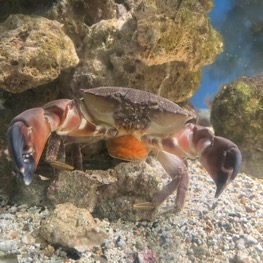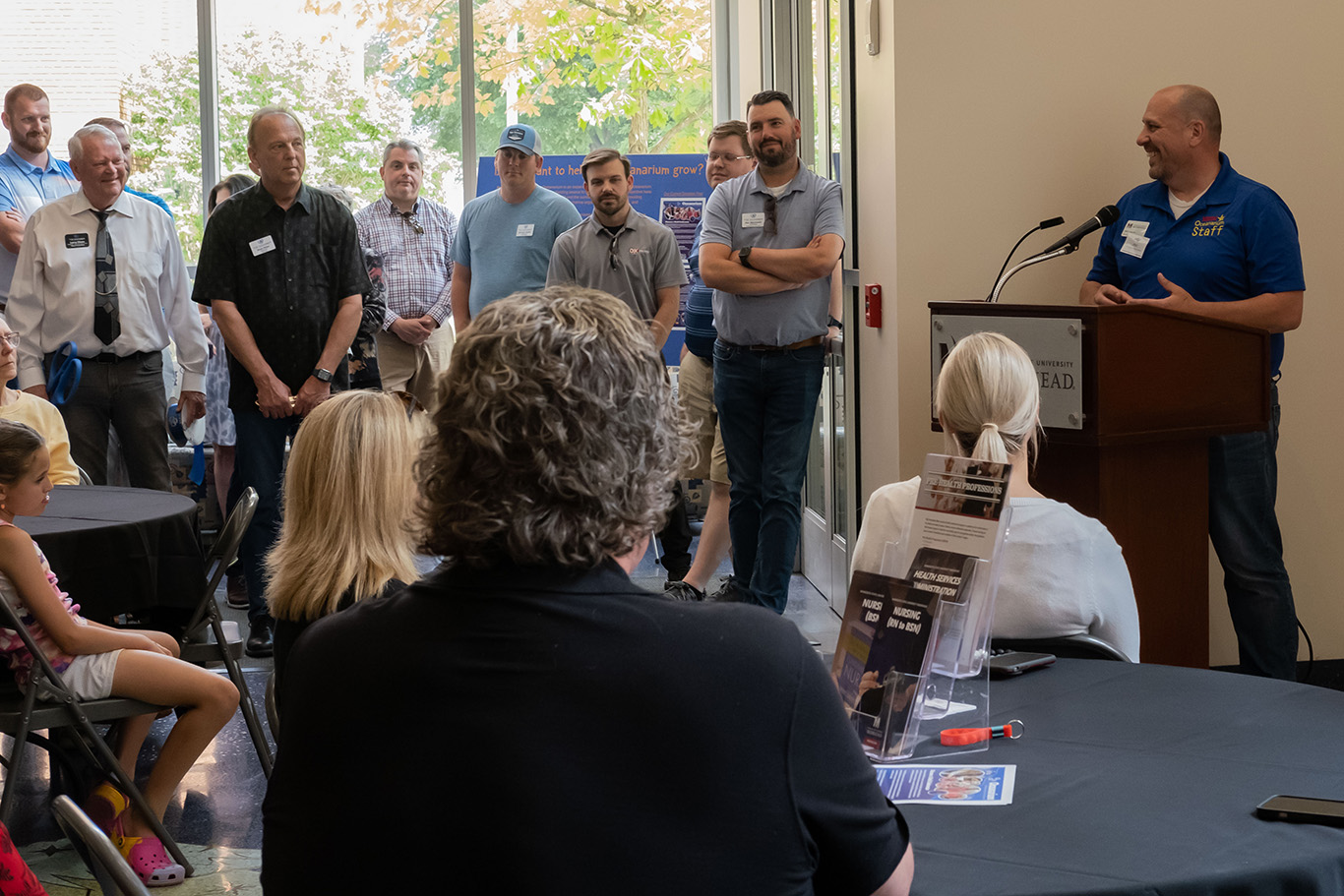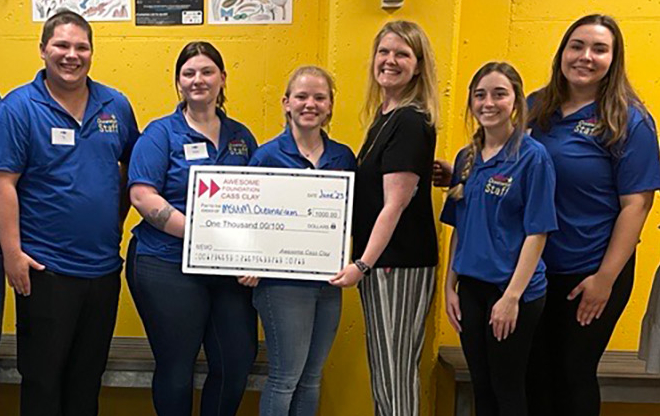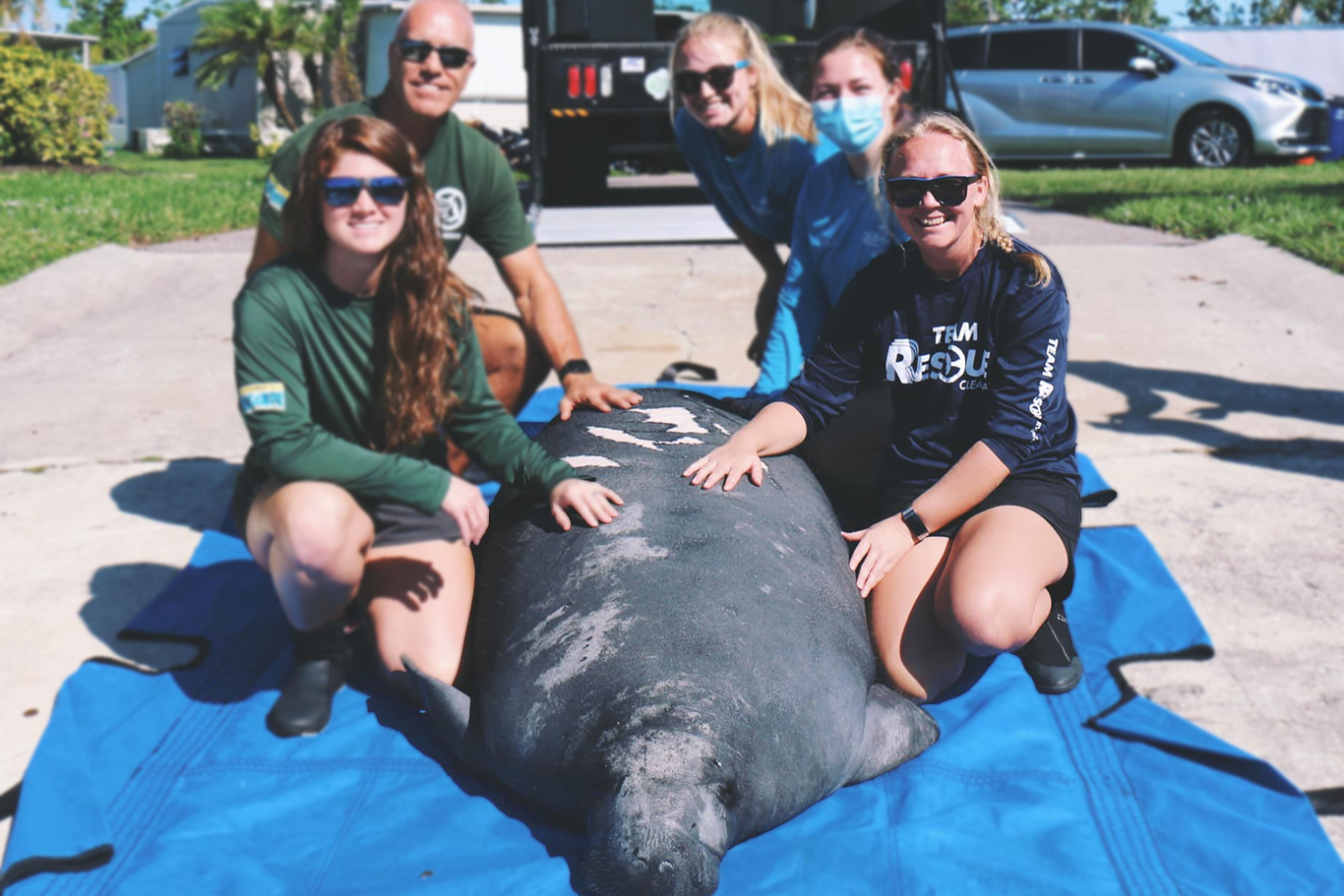A Piece of the Ocean: The MSUM Oceanarium's Metamorphosis
The world’s oceans are places of new beginnings. Rising tides wash beach shores of debris each day, invertebrates like starfish regrow lost limbs and countless creatures undergo metamorphic transformations, emerging familiar, yet new.
One such organism is a stone crab named Dozer. Dozer began life as a soft, claw-less larva before advancing through numerous separate stages to emerge as a full-grown crab. It is only fitting this transforming crustacean calls MSU Moorhead’s Oceanarium home.

Like Dozer, the MSUM Oceanarium has rapidly advanced from a marine research lab into a growing hub of community engagement and education. In 2023, eight years’ worth of work culminated in the grand re-opening and launch of a new era for the Oceanarium.
Wading In: The Beginning
The MSUM Oceanarium’s journey started in the minds of students led by Biosciences Professor Brian Wisenden. In 2014, he took a group of students on a life-changing trip to Costa Rica for an on-site tropical biology course. During this expedition, they encountered a working tide pool that left an impression. The students returned to MSUM with a visionary goal—to create a similarly immersive experience right on campus.
Wisenden and his students began their mission to establish the Marine Ecology Lab. They gradually brought their vision to life in the basement of Langseth Hall. One student, 2020 graduate Savanna Hohenstein, was a major contributor to the marine lab. In fact, her father and grandfather physically built the centerpiece enclosures in the facility. For several years, the marine lab was a center of aquatic research for Wisenden and his students.
Against the Current: The Next Stage
In 2020, the marine lab rebranded as the MSUM Oceanarium. Other changes followed as well. Wisenden applied for and received a $25,000 grant from the Innovation and Collaboration Office at Minnesota State. This funding allowed the facility to focus on expanding its outward-facing offerings.
Led by Facilities Coordinator Phil Larson, the Oceanarium began inviting visitors from the public. “Our vision is to create a living laboratory used for teaching, research and outreach by our school and local communities,” Larson said.
To help make the Oceanarium a visitor-friendly destination, Larson helped develop a class for students interested in becoming aquarists. Aquarist students became experts in tending to the facility and its animals. The students feed the animals, monitor their water quality and maintain equipment. Many have also embraced roles as tour guides and marketers as part of the class. One student aquarist, Emily Watson, appeared live on KVRR News’ morning show to promote the Oceanarium.
One of the aquarists’ most important tasks is to champion ocean conservation and relaying to people why the world’s oceans are important, even 1,200 miles from the nearest ocean in Moorhead.
“They (horseshoe crabs) have copper blood, which, for medicine, can be a coagulant and is antimicrobial. If you have had a vaccine or an IV, you likely have used horseshoe crab blood,” Watson explains.
Since offering tours, Larson and his team have welcomed more than 2,000 visitors annually.
Today, the MSUM Oceanarium houses more than 50 captivating species of marine life, each carefully curated to provide visitors with a truly interactive and investigative experience. From the bizarre but harmless horseshoe crabs to the playful stingrays that invite visitors to get up close and personal, the Oceanarium invokes curiosity and provides a sense of the diversity of our world’s oceans.
School groups and youth outreach programs comprise the majority of its visitors, but the public is also welcome to schedule visits to the Oceanarium. The Oceanarium’s ability to engage and educate people of all ages and backgrounds has been one of the keys to its rapid growth. Visitors leave with a newfound appreciation for oceans and their myriad creatures, inspired to act for marine conservation.
Entering the Deep: A Wave of Change
The Oceanarium’s rapid growth has seen several large-scale changes occur in the past 12 months. The facility’s footprint has doubled, removing a wall to make more space for exhibits and future programming. Larson and Wisenden also oversaw the installation of a Jellyfish exhibit, something that’s been on Larson’s wish list for years. Other exhibits are in progress, including plans for a massive reef tank.
With the Oceanarium’s new look and new exhibits, Wisenden, Larson and the rest of the Oceanarium’s Advisory Committee planned an open house and ribbon cutting to usher in this new phase. With the help of the FMWF Chamber, the Oceanarium welcomed 700 visitors on World Oceans Day (June 8), culminating in the ceremonial ribbon cutting. Larson says the event was a major success—but is only the beginning for the new-look Oceanarium.

Larson addresses the crowd at the Oceanarium's June 8 ribbon cutting and grand reopening
The Oceanarium is primed for continued growth. At the ribbon cutting, the Awesome Foundation Cass Clay awarded a $1,000 grant to help fund the Oceanarium’s operating costs, covering most of the yearly cost of the facility’s salt.
Sally Jacobson, Red River Zoo Executive Director and a member of the Oceanarium Advisory Committee, committed to donating half of the Zoo’s daily gate admission to the Oceanarium on World Oceans Day.

The Awesome Foundation Cass Clay present a check for a grant to the Oceanarium for World Oceans Day
With the continued dedication of Wisenden, Larson, community partners and eager students, the future looks bright for the MSUM Oceanarium. Larson has a shortlist of exhibits he’d like to add to the Oceanarium if funding is found, including pufferfish and octopi tanks. Regular educational programming is also part of the long-term vision.
“Our goal is to create a unique experience that makes learning about the ocean fun and adventurous. We have plans for future events and curriculum we hope will turn the Oceanarium into a heavily utilized and interactive facility,” Larson said.
Larson and Wisenden also hope to expand the academic benefits of the Oceanarium. MSUM recently developed a Marine Aquarist certificate and hope to create a Marine Biology emphasis. MSUM would be one of only two universities in the state to offer such a degree.
Like its inhabitant Dozer the stone crab, the Oceanarium crew has grown and adapted, pursuing and embracing change. With its captivating exhibits and evolving plans, it is exciting to imagine what the future of the Oceanarium looks like. What is certain, though, is it will continue to inspire wonder and ignite curiosity about our oceans.
“From the very beginning we’ve had an ambitious and specific vision for the Oceanarium. I think if (a past) version of myself could see the progress we’ve made he’d be excited that it only took us eight years to get this far. He’d also be thrilled at the support we are getting from MSUM and the community,” Larson said.
Make Sure Your Story Is Heard
Let us know how your life has been changed by being a Dragon: tell us your MSU Moorhead story today!
Send Us Your Story


